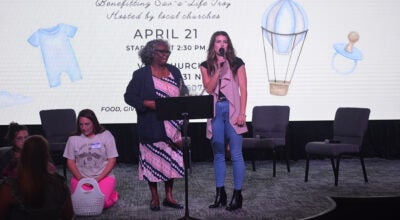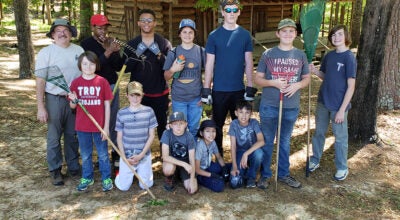Norman shares insight on exhibit
Published 7:26 pm Monday, February 16, 2009
Quilts are a metaphor for life, both individually and collectively.
That’s the way Georgette Norman, executive director of the Rosa Parks Museum in Montgomery, explains the interest in and the love of “bed covers.”
Norman was the guest speaker at the Johnson Center for the Arts and gave a “gallery talk” with the African-American quilt exhibit as a backdrop.
“Quilts are comfort food,” she told her audience. “They are nostalgic. They are intimate in their warmth and they are functional. Quilts are valued as art and as life objects.”
Norman said the African-American quilts were traditionally made from scrap cloth and were objects of unity and practicality.
“These quilts were made of bold, bright, contrasting colors,” she said. “The shapes were usually large and many of them were appliqué symbols.”
Norman said strong colors were chosen so that the different warring tribes could be recognized from a long distance. The colors were also chosen to represent a rite of passage.
“In quilt making, content was the most important thing,” she said. “Form was not that important. Content was what was important. And, if you stare at one of these African-American quilts long enough, you will hear the music it creates.”
The quilt artists held a place of high respect. The quilts were a silent test to the creativity and courage of the quilter.
With a few scraps, a quilt artist could turn them into something else – a functional item of beauty.
These quilts, these metaphors for life, are examples of how different shapes, different colors, different sizes and different textures can come together to make something useful and something of beauty. How, out of diversity comes unity.
“That’s like life,” Norman said. “We must recognize that we are each different but we if we work together and respect each other and stand together we can become all that we can be.”
Norman founded the Alabama African-American Arts Alliance, a statewide organization and partnership program of the Alabama State Council on the Arts in 1992. She served as executive director of the organization for seven years.
In addition to serving as executive director of the Rosa Parks Museum, Norman also works as an independent consultant in the arts education program design and implementation.




